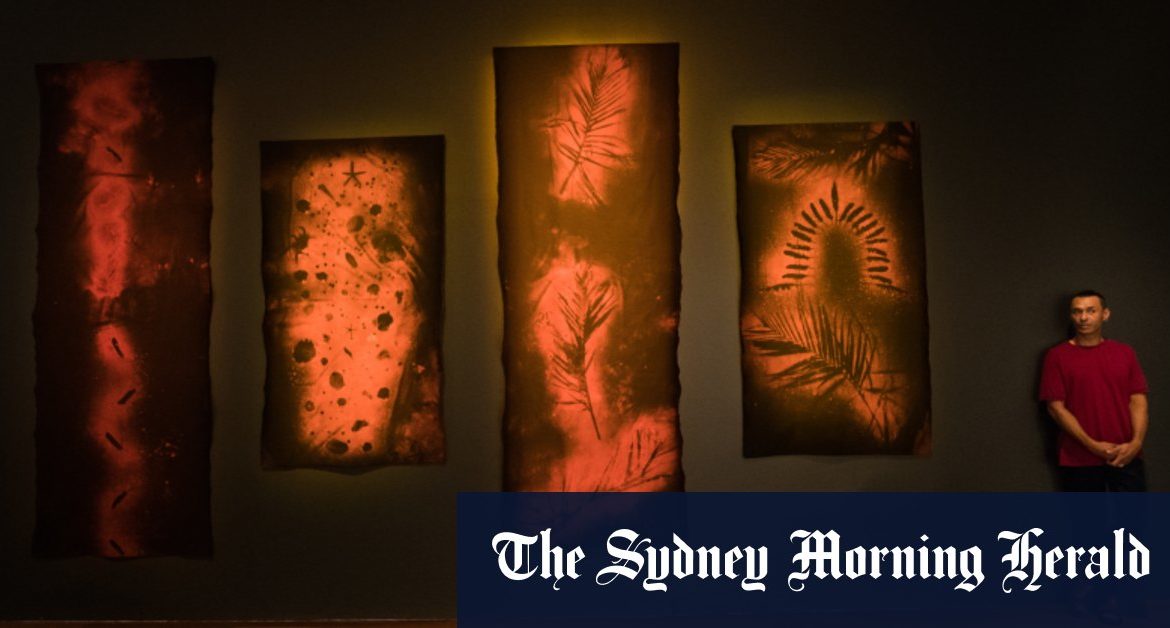It was put together by Hannah Presley, curator of Indigenous art at NGV. In her early research, trying to get her head around the NGV’s enormous collection, “a lot of the works that I was drawn to seemed to be around weather and country, and this idea of thunder gods and lightning spirits,” she says.
“It’s this old kind of information, and way of understanding the country and the weather and how everything worked,” she says. “This balance, this really sophisticated understanding has existed for a very long time – we’re talking about First Peoples that were connected to this country through the Ice Age.
Seth Namatjira – Untitled 2001Credit:NGV / Seth Namatjira
“[The artists are] keepers of that cultural knowledge, they point to all of these understandings that have existed and were transported through generations, through artworks… I thought yeah, this is something worth talking about.
“We’re facing this pretty dire messaging about climate change at the moment. And it really does feel like Indigenous cultural knowledge, and cultural leadership, is going to be a big chunk of how we deal with it, if we face it the way we need to.”
Naina’s work was bold and direct on the subject, Presley says.
“He’s talking about loss and grief. It’s a key work in the show, he’s looking at the bigger picture around climate change and the impact on First Nations people.”

Clinton Naina beside Stolen Climate.Credit:Jason South
Naina acknowledges the loss and grief but he also allows for hope.
“A lot has been ignored and destroyed,” he says. “But [the climate change crisis] is a great opportunity to learn, to open your eyes, and your ears, and everything, to something new.
Loading
“Hopefully what comes out of that is knowledge, and respect for country and for nature… Disease, famine, droughts, bushfires and bleaching of the reef, all of those things could be solved.
“We haven’t looked through the sovereign people’s lens to create a change. But once we do have a look through that lens, for that change, it’s possible that could happen. We’re still here. The land is still here. It’s not too late.”
Big Weather, free, 12 March–21 October 2021, The Ian Potter Centre: NGV Australia.
Nick Miller is Arts Editor of The Age. He was previously The Age and The Sydney Morning Herald’s European correspondent.
Most Viewed in Culture
Loading







